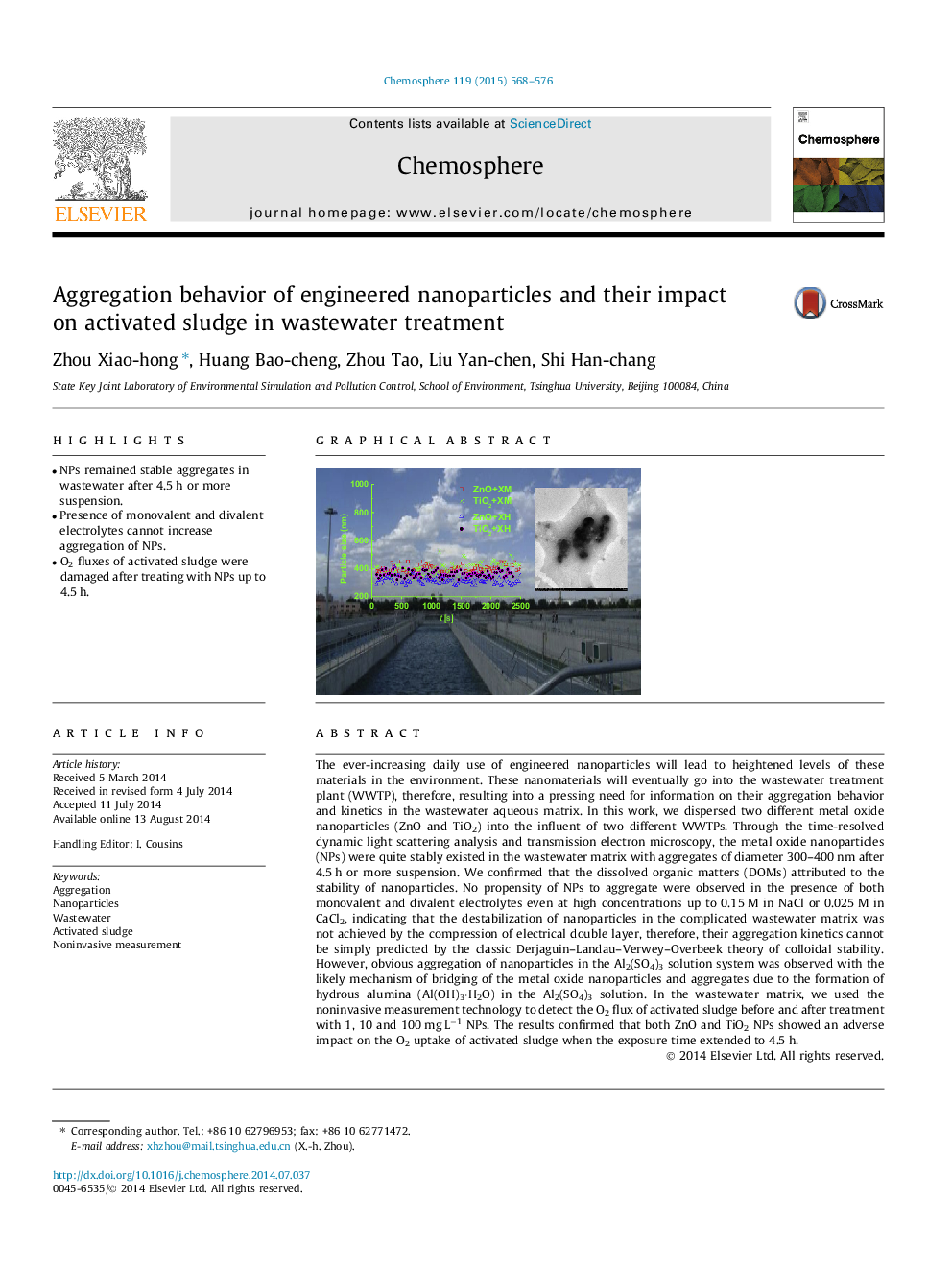| کد مقاله | کد نشریه | سال انتشار | مقاله انگلیسی | نسخه تمام متن |
|---|---|---|---|---|
| 4408669 | 1618852 | 2015 | 9 صفحه PDF | دانلود رایگان |
• NPs remained stable aggregates in wastewater after 4.5 h or more suspension.
• Presence of monovalent and divalent electrolytes cannot increase aggregation of NPs.
• O2 fluxes of activated sludge were damaged after treating with NPs up to 4.5 h.
The ever-increasing daily use of engineered nanoparticles will lead to heightened levels of these materials in the environment. These nanomaterials will eventually go into the wastewater treatment plant (WWTP), therefore, resulting into a pressing need for information on their aggregation behavior and kinetics in the wastewater aqueous matrix. In this work, we dispersed two different metal oxide nanoparticles (ZnO and TiO2) into the influent of two different WWTPs. Through the time-resolved dynamic light scattering analysis and transmission electron microscopy, the metal oxide nanoparticles (NPs) were quite stably existed in the wastewater matrix with aggregates of diameter 300–400 nm after 4.5 h or more suspension. We confirmed that the dissolved organic matters (DOMs) attributed to the stability of nanoparticles. No propensity of NPs to aggregate were observed in the presence of both monovalent and divalent electrolytes even at high concentrations up to 0.15 M in NaCl or 0.025 M in CaCl2, indicating that the destabilization of nanoparticles in the complicated wastewater matrix was not achieved by the compression of electrical double layer, therefore, their aggregation kinetics cannot be simply predicted by the classic Derjaguin–Landau–Verwey–Overbeek theory of colloidal stability. However, obvious aggregation of nanoparticles in the Al2(SO4)3 solution system was observed with the likely mechanism of bridging of the metal oxide nanoparticles and aggregates due to the formation of hydrous alumina (Al(OH)3·H2O) in the Al2(SO4)3 solution. In the wastewater matrix, we used the noninvasive measurement technology to detect the O2 flux of activated sludge before and after treatment with 1, 10 and 100 mg L−1 NPs. The results confirmed that both ZnO and TiO2 NPs showed an adverse impact on the O2 uptake of activated sludge when the exposure time extended to 4.5 h.
Figure optionsDownload as PowerPoint slide
Journal: Chemosphere - Volume 119, January 2015, Pages 568–576
